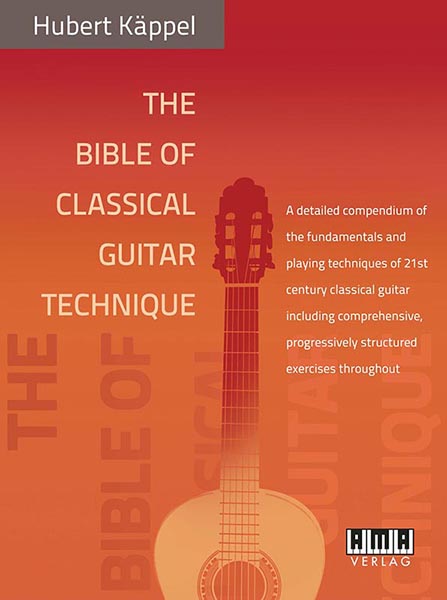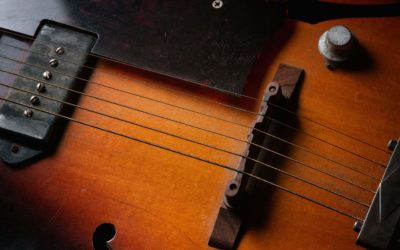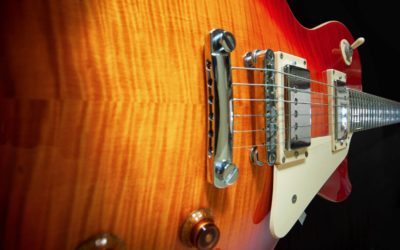Table of Contents
Book Review: “The Bible of Classical Guitar Technique”

When it comes to guitar technique, the history of Classical Guitar goes back hundreds of years, and not surprisingly there is a rich history of material available. It is rare that a more “recent” book would quickly join the elite methods of the past, yet, “The Bible of Classical Guitar Technique” by Hubert Kappel, is one such book.
This 240 page book is a must for anyone interested in Classical guitar or Fingerstyle guitar – even to the point of pushing aside such classics as “120 Right Hand Studies for Guitar” by Mauro Giuliani and “Major and Minor Diatonic Scales” by Andres Segovia. Let’s take a look at what makes this book so useful.
Part One
The first part of the book is devoted mainly to text and photographs pertaining to the nuances of hand position, finger position and sitting. Serious guitarists who are looking to explore Classical/Fingerstyle guitar will find the information suitable for gaining a solid understanding of the technical underpinnings of playing in this manner. Remember, Classical guitar has been around for literally hundreds of years and the techniques have been developed to the “nth” degree over that time and is foundational to the flawless technique executed by the likes of David Russell, John Williams, etc.
Part Two
I consider this to be the main focus of the book and is breathtaking in its progressive structured series of exercises. This section contains ten series of exercises, and while all of them are extremely useful, I will focus on the three sections that I consider to be the “creme de la creme”.
Arpeggios
The first thing that you will notice about the section on right hand arpeggios, is that open strings are used throughout. This subtle approach allows the player to focus on the task at hand (the right hand) and not have to concern themselves about chord fingerings and changes. I personally use a “TremeloMute” which is placed under the strings near the bridge, which limits the open string’s movement and provides a more “taut” feel. However, I have students that use a sock for the same effect.
You are first introduced to the six basic arpeggios which use “p-i-m-a” and then several pages of variations. These are all played with the thumb separate from the other notes of the arpeggio. Then twelve arpeggios are integrated into the program featuring a simultaneous thumb attacks.
Highlights of the later section of the studies include the 36 six note arpeggios, 24 eight note arpeggios and arpeggios that feature a bass note played on each attack of the arpeggio. The latter is a fantastic means of developing the attack of your thumb while playing other notes. There’s a TON of excellent studies in this section of the book, especially when you consider all of the variations, including playing the patterns on one string.
This section make for an excellent substitutition or supplemental material for Giuliani’s “120 Right Hand Studies for Guitar”. I currently use the early material with new students to prepare them for the Giuliani book and have had great results with this approach, and the more advanced material is part of my daily practice routine.
Scales in All Keys
While this section is devoted to playing scales in all keys, it is the beginning of this section that is perhaps the most interesting and innovative. Instead of jumping right into playing scales, Huber Kappel introduces “Preparatory Studies for Scales and Runs”. He uses what I would consider “scale fragments” of 5-6 notes that are comprised of fingerings used in various scales and then extrapolates them into various patterns that introduce right hand fingering patterns that develop the ability to play them with various “problematic” string crossings.
Since these fragments are small, (they are only played on two strings) the player is able to focus on playing them correctly up and down the neck, improving both their technique and tone. It’s a brilliant concept and and can prove to be quite challenging, especially when you progress forward to the exercises that feature more difficult passages due to the string crossings.
This is a great method for preparing to learn longer scales and melodic passages, as each “fragment” is broken down into 1-2-4, 1-3-4 and 1-2-3-4 fingering groupings and facilitates the memorizing and playing of scales, since you are already familiar/comfortable with these fingerings.
Ascending and Descending Slurs in the Left Hand
This section, along with the arpeggios, I would consider “essential”. Although the book is geared towards Classical guitarists, this and the previous section are easily adaptable for electric guitarists. Starting out with basic slurs (hammer ons and pulloffs), the material quickly moves onto the more interesting examples devoted to Diatonic and Chromatic slurs.
One of the highlights of this section of the book is the inclusion of slurs with fixed fingerings. This is especially useful for players interested in Contrapuntal playing, as the excellent examples use slurs with a held note. Although the note is marked “X” (just held, not played) I like to practice them with an actual note sustaining as I play through the series of variations.
Another highlight is the inclusion of slurs with a second part. This is a great series of exercises to build separation between your fingers moving across all the strings while playing a second part. Again, highly beneficial for Contrapuntal playing.
Part Three
The last section of the book is devoted to “Important Topics”. This includes various technique oriented subjects, as well as talking about Stage Fright and Practice Schedules. As with the other sections of the book, there is a wealth of excellent advice and instruction contained within.
Progressive Method
The progressive method used throughout the book is one of the key factors on making this such a useful book. You can feel yourself getting stronger, and more confident, as you conquer one series of exercises and moving onto the next. However, you should be prepared to spend some time on each grouping of exercises and really get them down before moving on. I have spent months on certain exercises before moving on and it was time well spent
TIP Icons
One of the standout features of the book is that there are several exercises that are marked “TIP”. These are for players who don’t have a lot of time to practice and are looking for the quintessential elements to add to their practice schedule. And while this is a welcome addition, I feel that you will really want to work through all of the exercises, but if you are short on time, this can be a great approach to using the book.
Summary
There is a tremendous amount of useful information contained within this book. It’s a book that I wished I had 40 years ago, so I would have had decades to devote to its material. However, I’m quite happy with the results that I’ve gotten over the last three years, even though I don’t put in as many hours as I used to. I barely touched upon all the material contained within, only highlighting the three (out of ten) sections that I found the most interesting. If you are a serious guitarist that is interested in Classical/Fingerstyle guitar, and are willing to put in the work, then this book is a MUST! Highly Recommended!
Final Words
I’d like to take a moment to thank everyone who has purchased my book! I appreciate your interest and support!
These days I’ve been splitting my time between 3-4 hours of guitar practice and 3-4 hours of drawing practice.
For fun, I’ve enclosed a recent master study drawing that I did of Frank Frazetta’s “Savage Pellucidar” painting, using Procreate on an iPad Pro, using an Apple Pencil 2.






very nice post, i certainly love this website, keep on it
Thank you for your interest and kind comment! 🙂
Usually I don’t learn post on blogs, but I would like to say
that this write-up very compelled me to take a look at and do
so! Your writing taste has been amazed me.
Thank you, very great post.
Thank you for your interest and kind comment! 🙂
These kind of post are always inspiring and I prefer to check out quality content so I happy to find many good point here in the post, writing is simply great, thank you for the post